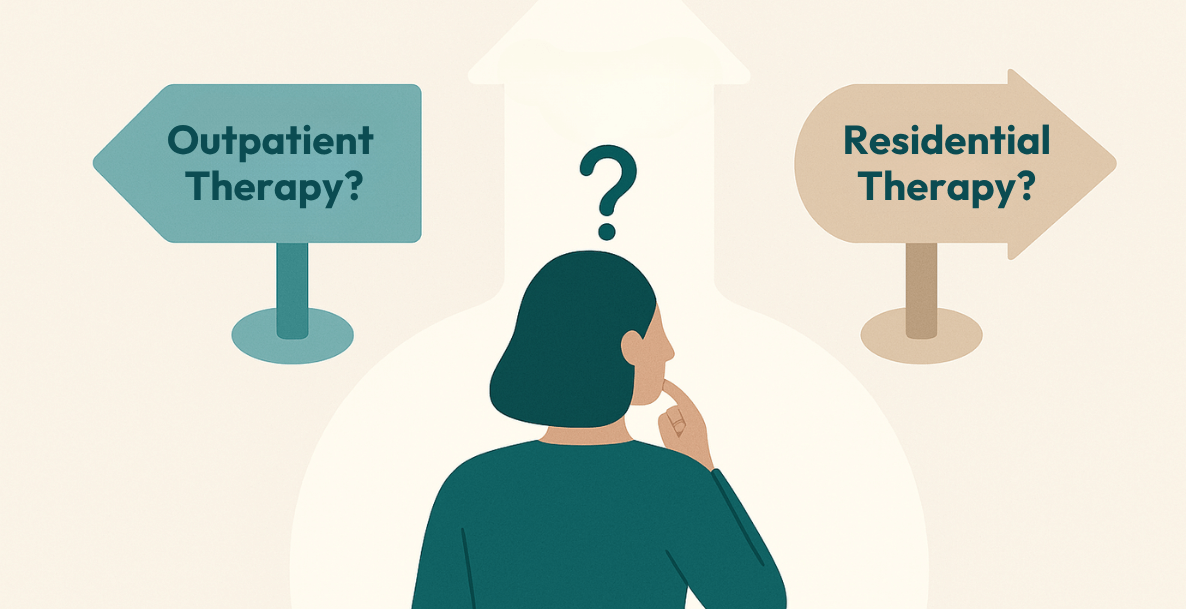Trauma impacts us in many ways. Its symptoms can be obvious at times, and subtle at others. Substance use[1], depression[2], and anxiety[3] are all examples of some obvious responses to trauma. Traumatic memories are typically difficult to deal with until the trauma is resolved, so many survivors engage in ‘avoidance’; behavioural methods of suppressing or temporarily alleviating their intrusive and disturbing thoughts and memories. This may be done through substance abuse, disordered eating, or high-risk behaviour.
Depression as a trauma symptom relates to the emotional shut-down of the nervous system that happens after it has been overwhelmed by a real or perceived potential threat. Anxiety relates to the symptoms of hypervigilance and fear that follow the ‘fight or flight’[4] response to traumatic experiences. However, some of the more subtle trauma responses don’t receive as much attention as the common, well-known responses. These symptoms are still an issue, and if we don’t identify and address them they may continue to disrupt our lives. One of these types is people-pleasing, or ‘fawning’.[5]

Download the Brochure
Discover Our Innovative Trauma Recovery Pathway
Fawning, or People-Pleasing
“Fawn types seek safety by merging with the wishes, needs, and demands of others. They act as if they unconsciously believe that the price of admission to any relationship is the forfeiture of all their needs, rights, preferences, and boundaries.”[6]
The above is taken from psychotherapist Pete Walker’s Complex PTSD: From Surviving to Thriving. Walker coined the term ‘fawning’ to describe what he observed to be a fourth type of response to threat, along with fight, flight, and freeze.
We may fawn, or people-please, to appease another person; a potential source of threat and danger. This response involves changing our behaviour or holding back on our opinions and desires in order to please another person, and in an attempt to avoid any conflict. Fawning often first develops in early childhood when a traumatic event has been perpetrated by a parent or primary caregiver, explains Walker.[7] A child who has been abused may learn to fawn to avoid any further abuse, such as physical violence, sexual abuse, or verbal abuse. In essence, the child aims to keep the abuser happy and appeased so that they don’t become abusive again.
The child may also neglect their own feelings, opinions, wants, and needs in an attempt to keep the abuser appeased and unbothered. This significantly damages the child’s world perception and creates a pattern of learned behaviour that many such children carry into their later lives, for the same trauma response to manifest as people-pleasing in relationships, both interpersonal and professional. This is why it is important to recognise the signs of fawning/people-pleasing in yourself and seek the necessary support to help you resolve your trauma.
What Are the Signs of People-pleasing?
The fawn response can be subtle, so a person may not even fully notice that it is happening. Their wants and needs may be neglected, opinions unshared, and others appeased, and it may seem that all of these things are simply part of the personality. There are some common signs that a person tends towards a fawn, or people-pleasing, response, such as[8]:
- Seeking the thoughts, opinions, and feelings of others to determine one’s own thoughts, opinions, and feelings
- Difficulty identifying one’s feelings
- A perceived lack of personal identity
- Constantly attempting to please and appease others
- Instinctually appeasing the other person at the first sign of conflict
- Neglecting one’s own values and beliefs and yielding to those of others
Emotional Responses Related to Fawning/People-Pleasing
Those who tend to people-please or fawn as a trauma response may experience a range of emotions that seem unusual or unfitting, particularly when the person being appeased is not of great importance to the individual. Common challenges and emotions faced by those who exhibit this trauma response include:
- Deep feelings of anger and guilt toward oneself
- Difficulty saying ‘no’ to others
- Taking on more responsibility, even when already feeling overwhelmed
- Difficulty setting clear personal boundaries
- Often taken advantage of by others, especially in relationships
- Feelings of stress or discomfort when called upon for an opinion
- Codependency in relationships
Fawning and Codependency
According to Walker, ‘it is this [fawning] response that is at the core of many codependents’ behaviour’. Those who struggle with codependency learning this fawning behaviour in their early childhood. For example, a young child may quickly learn that to protest or ‘talk-back’ to a parent leads to an even more frightening situation, where there is punishment for the protest against the initial event, behaviour, or demand. If talking back or protesting is met with even harsher retaliation from the parent or caregiver, then the child will learn to give up on their ‘fight’ response and may never develop a sense of assertiveness regarding their own wants and needs.
Explore Our Treatment Options
Find Out What Makes Us Different
The staff at our globally recognised mental health clinic have been informed, trained and supervised by some of the world’s leading trauma experts such as Dr Bessel van der Kolk, Dr Janina Fisher, Dr Stephen Porges, Dr Dick Schwartz and more.
Maladaptive People Pleasing
Though the fawn response is initially an attempt at survival, it is maladaptive when it occurs outside the realm of actual threat. When we engage in behaviour that is subservient and appeasing to others, we are likely to feel that we are easy to manipulate, or that we are a ‘pushover’. To abandon oneself to appease others and prevent even the slightest hint of conflict is to lose our own agency and behavioural autonomy. As a result, those who engage in this type of trauma response are subject to feelings of low self-worth, depression, and low self-esteem, which can have a knock-on effect and lead the individual into other maladaptive coping behaviours to alleviate their symptoms, such as the misuse of substances.[9]
Such behaviour also attracts narcissistic personality types into the life of the fawner. Narcissistic people may be abusive and exploitative of the fawner’s lack of agency and ease of malleability as a person.
The Importance of Resolving Trauma
Fawning or people-pleasing can often be traced back to an event or series of events that caused a person to experience PTSD, more specifically Complex PTSD, or C-PTSD. Fortunately, C-PTSD can be approached and treated through comprehensive therapy. At Khiron Clinics, we work closely with clients in a compassionate and understanding manner to help them explore the causes of their trauma and cultivate personal strength and resilience to be applied on the journey to trauma recovery.
In therapy, clients can learn about their specific trauma response and how it is used as a means of coping with triggers and stress. In place of maladaptive coping behaviours, clients can be taught healthier ways of dealing with processing their thoughts, feeling, and memories and ultimately learn how to be in relationship to other people without feeling the constant need to please and appease.
If you have a client, or know of someone who is struggling to heal from psychological trauma, reach out to us at Khiron Clinics. We believe that we can improve therapeutic outcomes and avoid misdiagnosis by providing an effective residential program and out-patient therapies addressing underlying psychological trauma. Allow us to help you find the path to realistic, long-lasting recovery. For information, call us today. UK: 020 3811 2575 (24 hours). USA: (866) 801 6184 (24 hours).
Sources
[1] Khoury, Lamya et al. “Substance use, childhood traumatic experience, and Posttraumatic Stress Disorder in an urban civilian population.” Depression and anxiety vol. 27,12 (2010): 1077-86. doi:10.1002/da.20751
[2] Flory, Janine D, and Rachel Yehuda. “Comorbidity between post-traumatic stress disorder and major depressive disorder: alternative explanations and treatment considerations.” Dialogues in clinical neuroscience vol. 17,2 (2015): 141-50.
[3] Silver, Kristin E et al. “Trauma and Health Symptoms in a Community Sample: Examining the Influences of Gender and Daily Stress.” The American journal of family therapy vol. 46,2 (2018): 153-167. doi:10.1080/01926187.2018.1461031
[4] Steimer, Thierry. “The biology of fear- and anxiety-related behaviors.” Dialogues in clinical neuroscience vol. 4,3 (2002): 231-49.
[5] Walker, Pete. Complex Ptsd: From Surviving to Thriving : a Guide and Map for Recovering from Childhood Trauma. , 2014.
[6] Walker, Pete. Complex Ptsd: From Surviving to Thriving : a Guide and Map for Recovering from Childhood Trauma. , 2014.
[7] Walker, Pete. Complex Ptsd: From Surviving to Thriving : a Guide and Map for Recovering from Childhood Trauma. , 2014.
[8] Gaba, Sherry. “Understanding Fight, Flight, Freeze And The Fawn Response”. Psychology Today, 2020, https://www.psychologytoday.com/us/blog/addiction-and-recovery/202008/understanding-fight-flight-freeze-and-the-fawn-response.
[9] Toker, Timur et al. “The relationship between traumatic childhood experiences and proclivities towards substance abuse, self-esteem and coping strategies.” Turk psikiyatri dergisi = Turkish journal of psychiatry vol. 22,2 (2011): 83-92.





